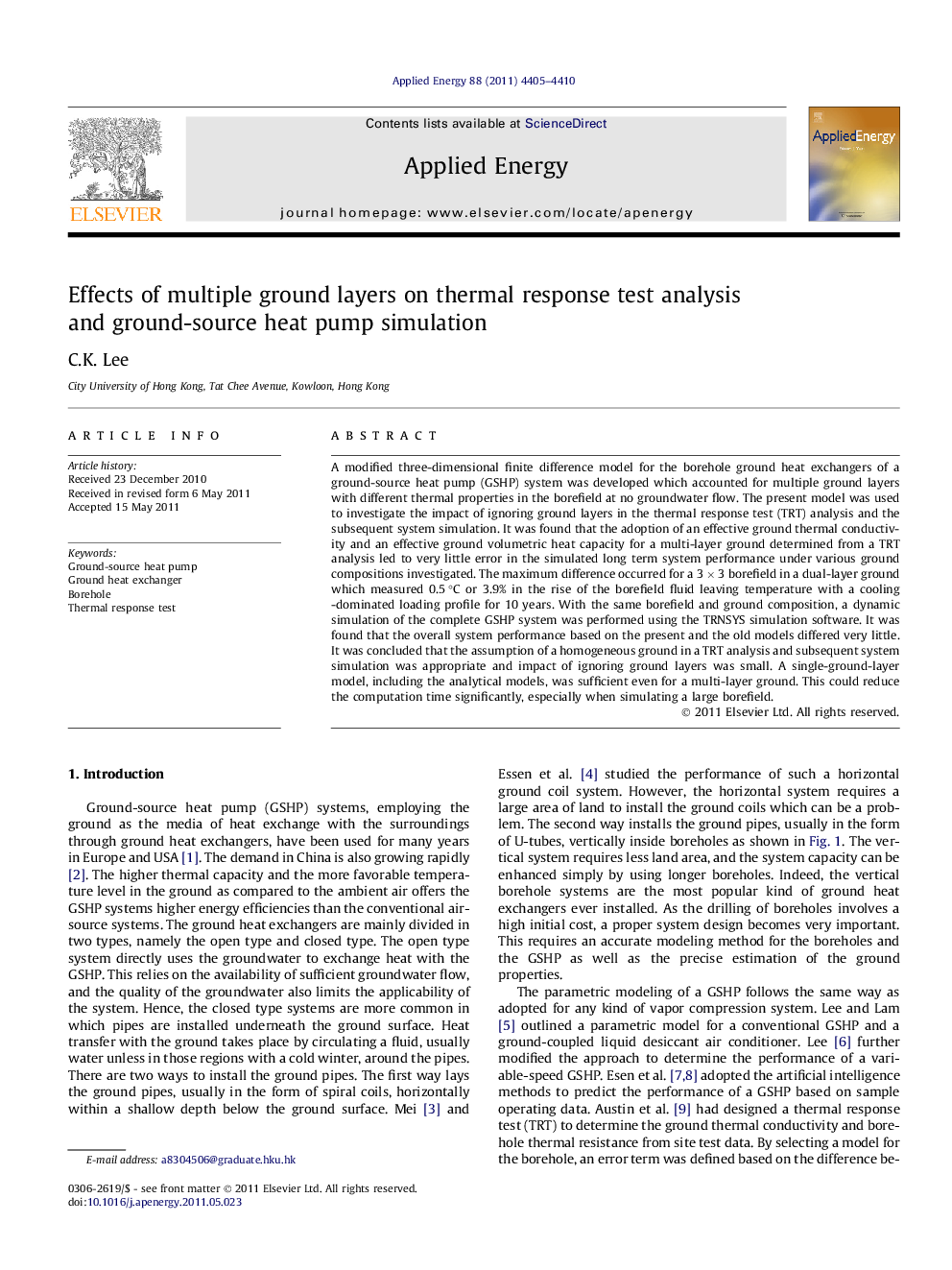| Article ID | Journal | Published Year | Pages | File Type |
|---|---|---|---|---|
| 243961 | Applied Energy | 2011 | 6 Pages |
A modified three-dimensional finite difference model for the borehole ground heat exchangers of a ground-source heat pump (GSHP) system was developed which accounted for multiple ground layers with different thermal properties in the borefield at no groundwater flow. The present model was used to investigate the impact of ignoring ground layers in the thermal response test (TRT) analysis and the subsequent system simulation. It was found that the adoption of an effective ground thermal conductivity and an effective ground volumetric heat capacity for a multi-layer ground determined from a TRT analysis led to very little error in the simulated long term system performance under various ground compositions investigated. The maximum difference occurred for a 3 × 3 borefield in a dual-layer ground which measured 0.5 °C or 3.9% in the rise of the borefield fluid leaving temperature with a cooling-dominated loading profile for 10 years. With the same borefield and ground composition, a dynamic simulation of the complete GSHP system was performed using the TRNSYS simulation software. It was found that the overall system performance based on the present and the old models differed very little. It was concluded that the assumption of a homogeneous ground in a TRT analysis and subsequent system simulation was appropriate and impact of ignoring ground layers was small. A single-ground-layer model, including the analytical models, was sufficient even for a multi-layer ground. This could reduce the computation time significantly, especially when simulating a large borefield.
► New borehole model was developed for multiple ground layers for GSHP systems. ► The new model was used to analyze the impact of ignoring ground layers. ► The error when using a single-ground-layer model in a composite ground was small. ► The assumption of a homogeneous ground in GSHP simulation was appropriate.
